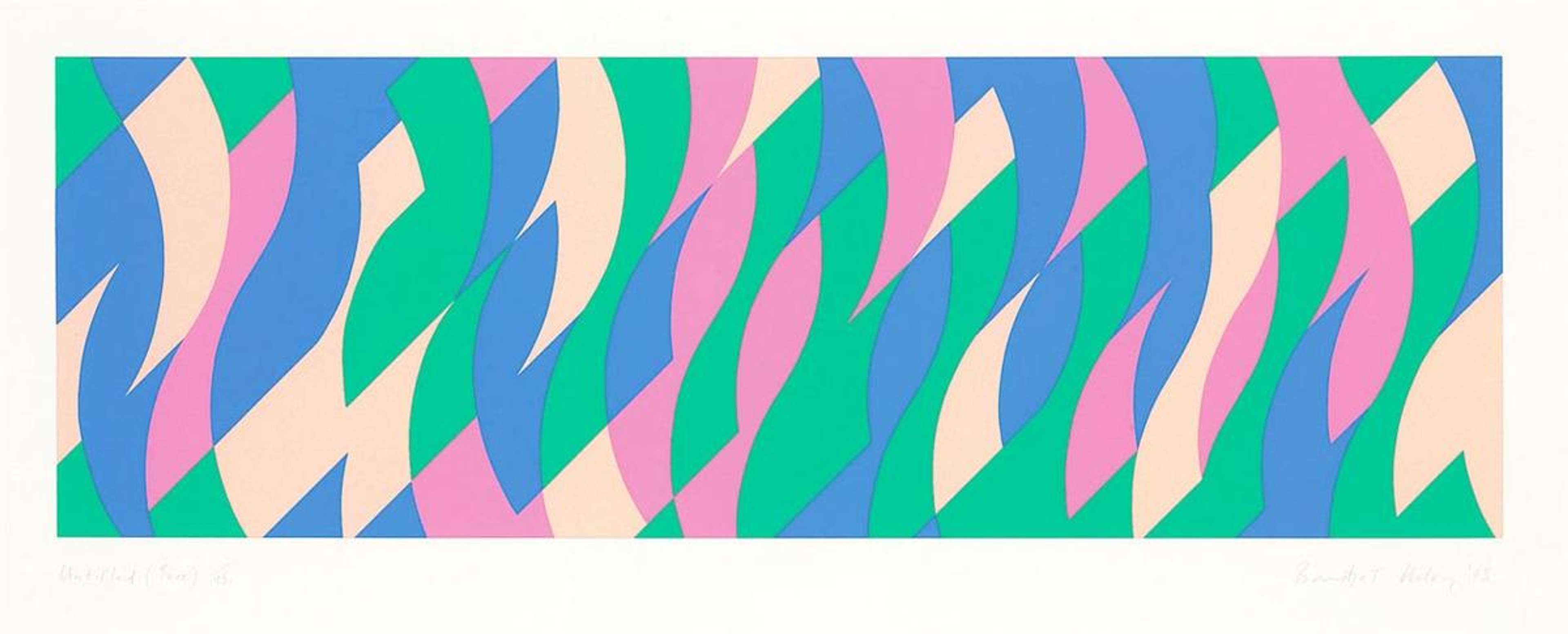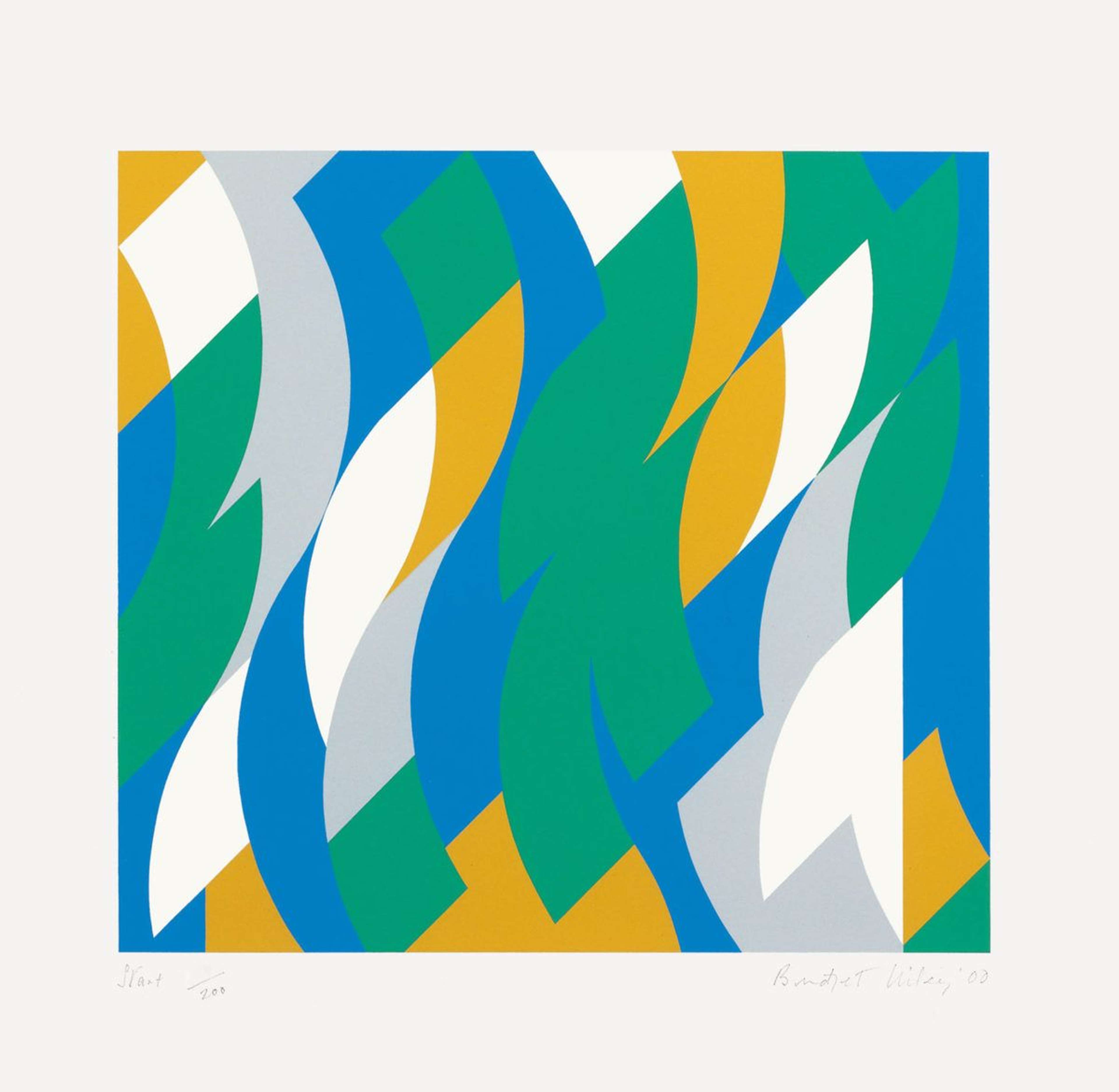 Going Across © Bridget Riley 2001
Going Across © Bridget Riley 2001
Bridget Riley
111 works
The Lozenges print series was created by Bridget Riley in 1989. It is an example of her exploration of colour and form and represents her Op Art style.
This series was produced over a period of a decade
 Untitled (Evoe) by Bridget Riley, 2003
Untitled (Evoe) by Bridget Riley, 2003Riley's Lozenges is composed of a body of work from 1998 - 2009. It is characterised by planes of interlocking colour and geometric forms.
Riley took inspiration from dance and movement
 Going Across by Bridget Riley, 2001
Going Across by Bridget Riley, 2001Executed in a carnival of colour combinations, the sweeping motion is redolent of a dance or the undulations of nature: waves rolling on the shore, or trees being blown in the wind.
Riley's work is also inspired by her time spent in Cornwall
 Two Blues by Bridget Riley, 2003
Two Blues by Bridget Riley, 2003Although Riley’s work is consistently abstract, it is grounded in natural experience, predominantly from her adolescence spent in Cornwall, escaping war-torn London.
The natural world is important in this series
 One Small Step by Bridget Riley
One Small Step by Bridget RileyRiley confesses that the ever-changing Cornish seas and skies stimulated her vision, the sensations of which she seeks to recreate in non-representational painting.
Riley arrived at international acclaim following an exhibition at MoMA
 About Lilac by Bridget Riley, 2007
About Lilac by Bridget Riley, 2007Riley was first propelled to international acclaim following the display of several of her black and white, optically dazzling, psychedelic works at the Museum of Modern Art in New York as a part of the 1965 exhibition The Representative Eye.
Before 1967 Riley worked exclusively in monochrome
 Start by Bridget Riley, 2000
Start by Bridget Riley, 2000Up until 1967 Riley neglected tones that were not black, white or grey as part of her journey through geometry and abstraction.
Colour allowed Riley to explore emotional in art
 Large Fragment by Bridget Riley, 2006
Large Fragment by Bridget Riley, 2006Riley claimed she was foraying into “new perceptual art”: evolving art far beyond the realm of something purely aesthetic. Riley saw colour as capable of eliciting emotional responses in the observer.
Riley's exploration of colour in this series is complex
 Leap by Bridget Riley, 2008
Leap by Bridget Riley, 2008Colour in this collection, like Riley’s other series, is declaratively interactive: each hue seems to change pitch and tone depending on its neighbours.
Riley created preparatory sketches for this series
 Echo by Bridget Riley, 1998
Echo by Bridget Riley, 1998Despite being composed of seemingly random shapes, once one's eyes focus on the mesmerising paintings, diagonal lines appear at regular intervals across the surface: evidence that the Lozenges paintings are the result of meticulous preparatory sketching.
The colour combinations in these works will be familiar to the Riley connoisseur
 Wall Painting by Bridget Riley, 2007
Wall Painting by Bridget Riley, 2007Whilst some works are more limited in their range of colour, such as Going Across (2001), others share a similar rotation of colours, such as green, blue, yellow and white in Start (2000), Echo (1998) and Frieze (2000).
